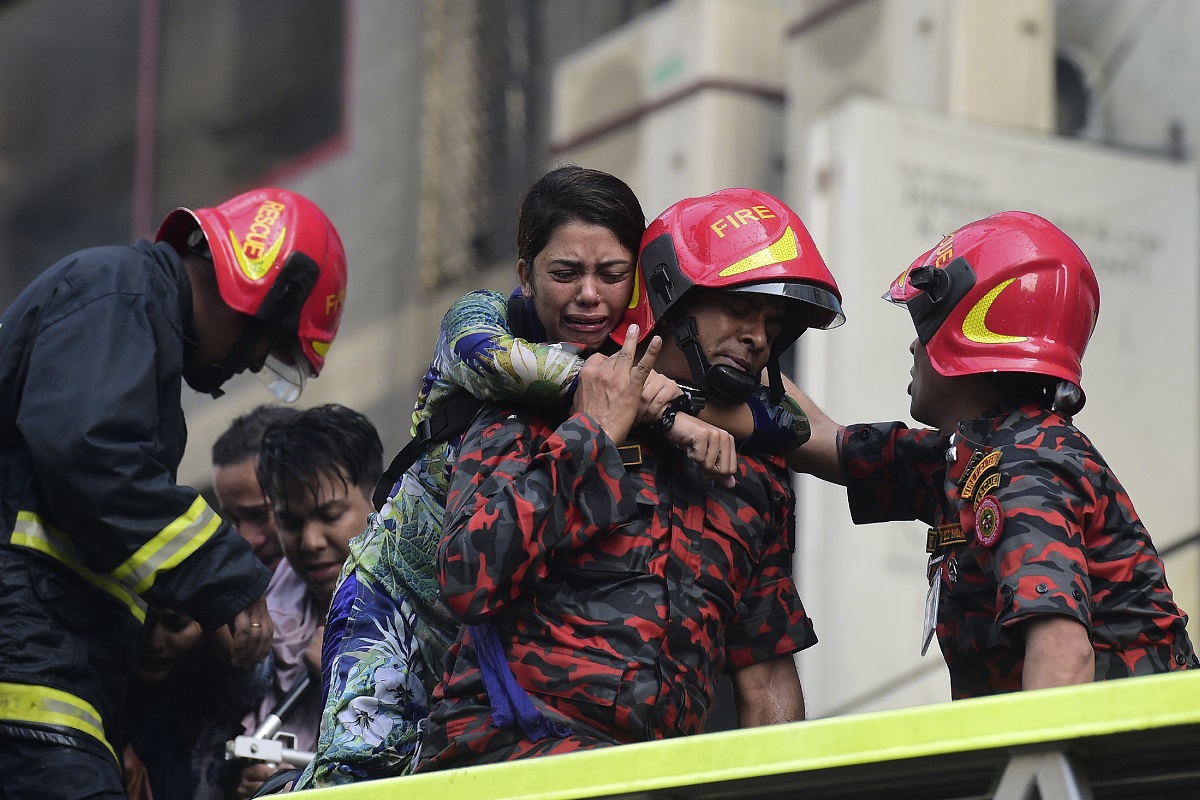City sizzles as Met dept extends heatwave alert
After sizzling at the highest day temperatures today, citizens of south Bengal, including Kolkata could face harsher days with the probability of temperature going up in the next few days.
The fast-growing Bangladeshi megacity of more than 17 million people is a cocktail of disaster risks.

A Bangladeshi survivor reacts after being rescued by firefighters from a burning office building in Dhaka on March 28, 2019. A huge fire tore through a Dhaka office block March 28 killing at least five people with many others feared trapped in the latest major inferno to hit the Bangladesh capital. (MUNIR UZ ZAMAN / AFP)
Thursday’s fire in Dhaka’s 22-storey commercial- cum-residential tower lengthens the loop of urban disasters in the Bangladesh capital, beginning with one of the world’s worst environmental disasters at Rana Plaza in April 2013, albeit intrinsically a building collapse. The two tragedies are both the same and different. Of course, 1100 people did not perish as they did six summers ago. Yet at FR Tower in Dhaka’s upmarket Bonani area, the garment stores, though not manufacturing centres catering to a largely Western clientele, were reduced to ashes. This is not to forget the blaze in Dhaka’s “old city” last month, when no fewer than 70 people were killed. It is painful to reflect that fire is the mortal thread that binds one accident to another, embedded in disastrous urban planning The casualty toll till Saturday morning was 25, but that isn’t the last word on the enormity of the latest tragedy. Many more are said to be missing; at least six people leapt to their deaths, recalling the catastrophe at Stephen Court in Kolkata’s Park Street in March 2012. In the event, they were driven quicker to their end than to be engulfed in the deadly inferno.
It is a pointer to the lack of safety measures that occupants of the highrise had to grasp at ropes that were lowered from helicopters in what was almost a battlefield operation. In the absence of accessible exits, they tried to slide down the building using its external wing. On the face of it, FR Towers is another urban monstrosity; for all the chic garment and food stores, it has been a potential death trap since the construction stage. Just as Kolkata showcases the inherent dangers of the development of underdevelopment, so too does Dhaka.
The cauldron bubble has been simmering for a while and the periodic explosions are almost inevitable. The serial disasters can well be contextualised with a 2017 survey of the fire department which referred to Dhaka as a city “where the spectre of fire looms.” Out of more than 3,700 highrise buildings in the capital, barely 129 had what they called “satisfactory fire vulnerability”. The rest were classified as “risky” or “extremely risky”. The skyscraper lacked fire equipment, was constructed with inadequate fire exits, and was at least four storeys higher than authorised. Which would suggest that the plan sanctioned by the municipal authorities was accorded the short shrift. Far from being questioned, let alone arrested, the building’s owner is yet to comment publicly.
Advertisement
The fast-growing Bangladeshi megacity of more than 17 million people is a cocktail of disaster risks. Much of its development is unplanned and in zones that are vulnerable to earthquakes. Hundreds of buildings in its 17th-century old quarter lack reinforced building material, make do with a tangled skein of outdated wiring and inadequate water supplies, and serve as illegal warehouses for chemicals. A 2015 study of a particularly crowded ward revealed that half its streets were too narrow for fire engines to navigate.
Advertisement